When Chinese Art meets Paris
5 min read
While the ten-year revitalization project of the Chinese industrial sector was adopted in 2015 under the aegis “Made In China 2025”, the sinophile Nathalie Morin took the lead in proposing to discover Chinese luxury craftsmanship. On an ephemeral event from 23 to 25 January 2018, the old-fashioned setting of the historically famous building of the Pagoda, a stone’s throw away from the Champs-Élysées, made it possible to welcome, on four levels, a section of the know-how of the Middle Kingdom.
 An initiative dubbed “China of Exquisite Gesture”, as an apology to handmade goods, and which wishes to become an annual meeting for lovers of Chinese expertise in luxury.
An initiative dubbed “China of Exquisite Gesture”, as an apology to handmade goods, and which wishes to become an annual meeting for lovers of Chinese expertise in luxury.
Through the creations of different artistic specialties, the visitor was able to learn about the traditions revisited by contemporary talents.
Thus wishing to bring back to the present day a philosophy of the “beautiful”, called “GaoYa”, which had partly disappeared under the era of Mao Tse Tong (photo credits: Alex Plato).
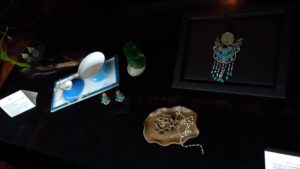
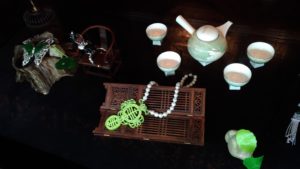
Thus, we could admire the delicate porcelain developed by Asianera. High jewelery set with ancestral gems such as jade and tourmaline, reproducing classic Chinese symbols, such as an abacus, a moving butterfly or a magnifying glass. Some pieces of this workshop LeiWei, even paying the luxury of being decorated with kingfisher feathers (photo credits: Alex Plato).
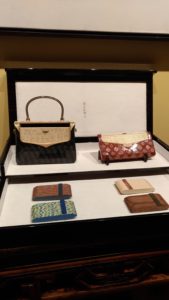
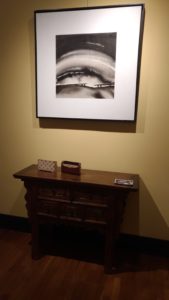
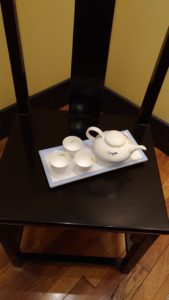
The leather goods or rather the “leather goods-marquetry” is not put aside since the young creators of the DMLJ studio were inspired by the current aesthetics under the Tang Dynasty to design real pieces of art with these handbags and pouches entirely in noble wood. So we find at the same time rosewood, maple and an alloy made of spruce, all lacquered in order to highlight this assemblage of more than 700 actions which make incredibly singular and precious details, especially stamped with patterns of the Pipa type (photo credits: Alex Plato).

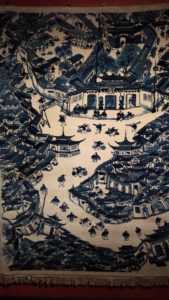
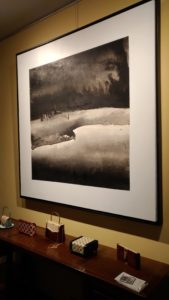
In continuity with these ancient themes, the Muni Carpets tapestry factory, founded in 1988 near the Yangze River, illustrates a special focus on custom patterns and carefully selected materials for the development of these unique pieces taking, not without imagination, elements of the Chinese collective universe. The manufacture is distinguished by the use of organic materials and dyes including indigo, requiring weeks of preparation to obtain up to 10 shades of blue on one of their carpets.
Finally, the French-Chinese painter Li Chevalier completes the painting with her Chinese inked paintings. The highlight of the show was the holding of an exceptional concert of a duet of classical musicians Guo Gan and Adrien Frasse-Sombet, symbolizing the Franco-Chinese understanding and showing that two typical instruments of each of the two cultures (erhu and cello) united in delight in the performance of tunes of these two different tonal banks (photo credits: Alex Plato).
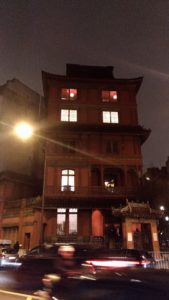
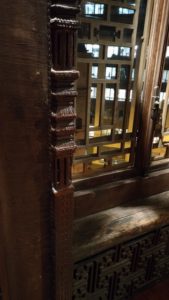

About the Pagoda, on the initiative of the chinese born art dealer Ching-Tsai Loo, this first asian Art gallery of Paris was built between 1926 and 1928 on the plans of the architect Fernand Bloch following the style of traditional chinese houses. On every detail of this private event nowadays, the visitor can admire the atmosphere of the good old times, made of ceramics vases, fine wood furniture and moldings (photo credits: Alex Plato).
https://www.instagram.com/p/BeVR_h-FzUo/?taken-by=francevisiting
Two Asian art galleries to watch closely.
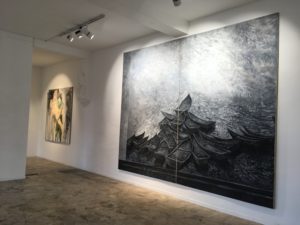 Turning more towards Contemporary Art, the Artasia Art Center, very close to the Châtelet, offers a large space allowing Asian artists to introduce some of their works in residence.
Turning more towards Contemporary Art, the Artasia Art Center, very close to the Châtelet, offers a large space allowing Asian artists to introduce some of their works in residence.
The Center Artasia Paris affirmed the strong points of its identity to propose a panel of notable and talented artists, to strengthen the links between France and Asia. Its anchorage in the heart of Paris, in symbiosis with the actors of the world of art and culture (photo credits: Artasia).
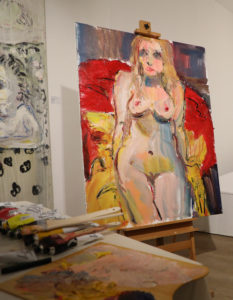

For its last exhibition entitled “‘Statue de la Société”, the Art Center Artasia Paris has invited last 10 November 2017, through an original rendez-vous under the sign of contemporary creation that highlighted a combined exhibition of the duo of Chinese artists: ZHANG XUDONG and HE JIE. Singular views on a plural China, statuary poses, emotions, 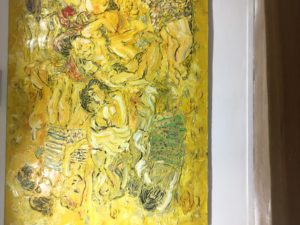 sensuality, oil painting: these were the key words of this artistic event. A dozen works were gathered in this exhibition and an exclusive live nude performance went on during the vernissage. An opportunity to discover this ancestral technics from a master (photo credits: Artasia).
sensuality, oil painting: these were the key words of this artistic event. A dozen works were gathered in this exhibition and an exclusive live nude performance went on during the vernissage. An opportunity to discover this ancestral technics from a master (photo credits: Artasia).
The Artasia Art Center Paris, 2 Bis Quai de la Mégisserie (75001). Tuesday to Saturday from 10:00 to 18:00.
In an other hand, the Ballon Rouge gallery, in the deep of the Marais enhances a mix with traditional chinese Art material and european contemporary artworks, especially in photography due to the presence of a photo studio inside the gallery.

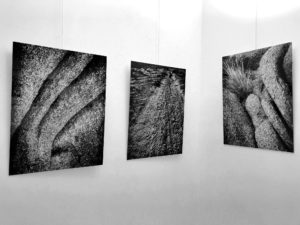
The last exhibition, held, last November 2017, between their walls is a good example of the crossculture. Untitled “I’m TOUCHED!” by the photographer Monika Barth. This event showed, through black and white clichés, a certain sense of observation of Nature and Human Being by the artist.
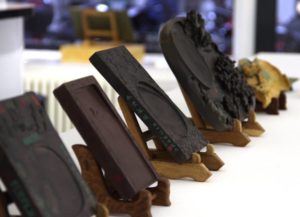 Earlier that year occured the “Retour de l’Art Traditionnel Chinois” exhibition, involving DUAN Ink Stones, from January 27 to February 26, 2017.
Earlier that year occured the “Retour de l’Art Traditionnel Chinois” exhibition, involving DUAN Ink Stones, from January 27 to February 26, 2017.
The DUAN Ink Stones, also called “the ink Marquise” in literature, the inkstone is one of the four scholar treasures in China, with brushes, ink and paper. The word, designating it, is pronounced in the same way as the verb “rubbing” in Chinese.
The history of the ink stone in China is very long. Between 1000 BC to 1500 BC, the Chinese already rubbed the ink stick on hard materials like jade, brick, bronze, iron for writing. As a result of the development of pottery, the raw materials of inkstone have changed in favor of a kind of sericite slate found only in the quarries of some cities. Today, the four best grades of inkstone are Duan, She, Tao, Chengni, named after four cities in China.
The most qualitative Duan inkstone comes from the city of Zhaoqing, Guangdong Province, for 1300 years. Even today, everybody can see the license to exploit the quarry of the Duan stone, engraved on a large stone Duan, in the village party hall, reserved for traditional activities and weddings.
Opening hours of the gallery: Tuesday to Saturday from 13h to 18h and Sunday from 14h to 18h, at 10 rue des Gravilliers 75003 Paris.
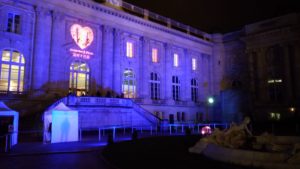
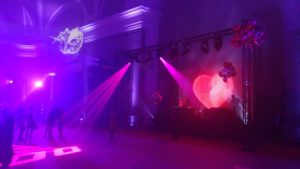
Last but not least, chinese exhibitions often occur in Paris, like the défilé for the Chinese New Year, mostly in Chinatown, in 13th district, around Avenue d’Ivry. And also lately, at the initiative of the city of Guangzhou, a specific event was organized inside the Grand Palais to celebrate both the Valentine Day, the french-chinese friendship and also the chinese new year of the dog. A huge celebration with videos of the chinese region mixed with Paris broadcasted on the walls with large screens and many people dancing and networking on chinese dishes, such as dim sum.
https://www.instagram.com/p/BfMmSmFFNWF/?taken-by=francevisiting


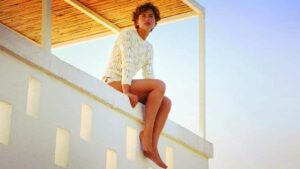

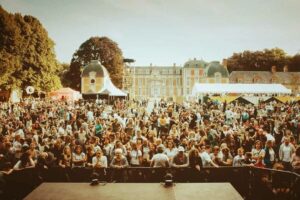
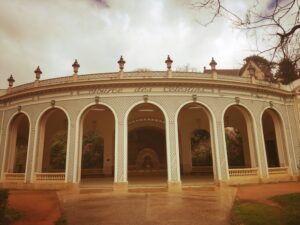
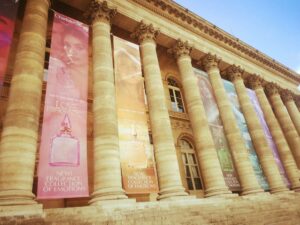
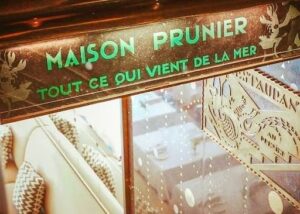
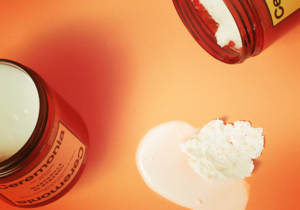
1 thought on “When Chinese Art meets Paris”